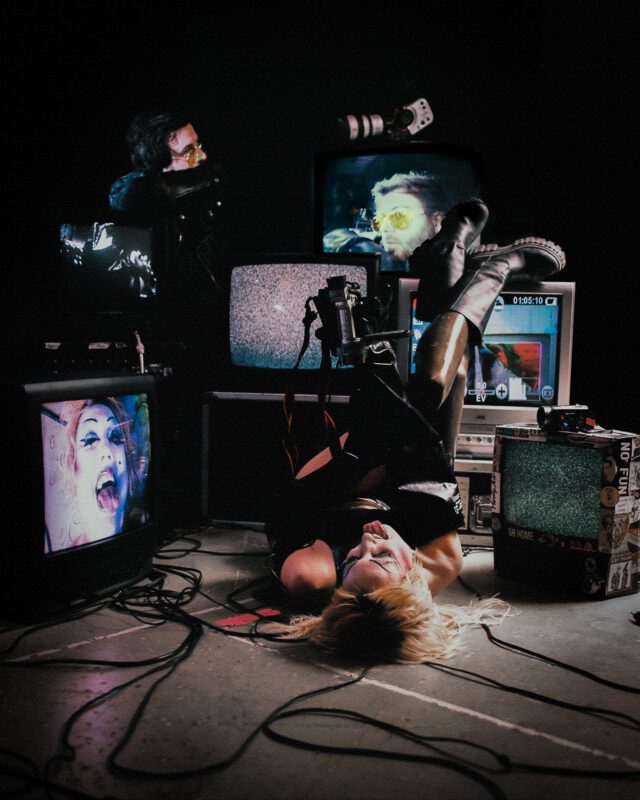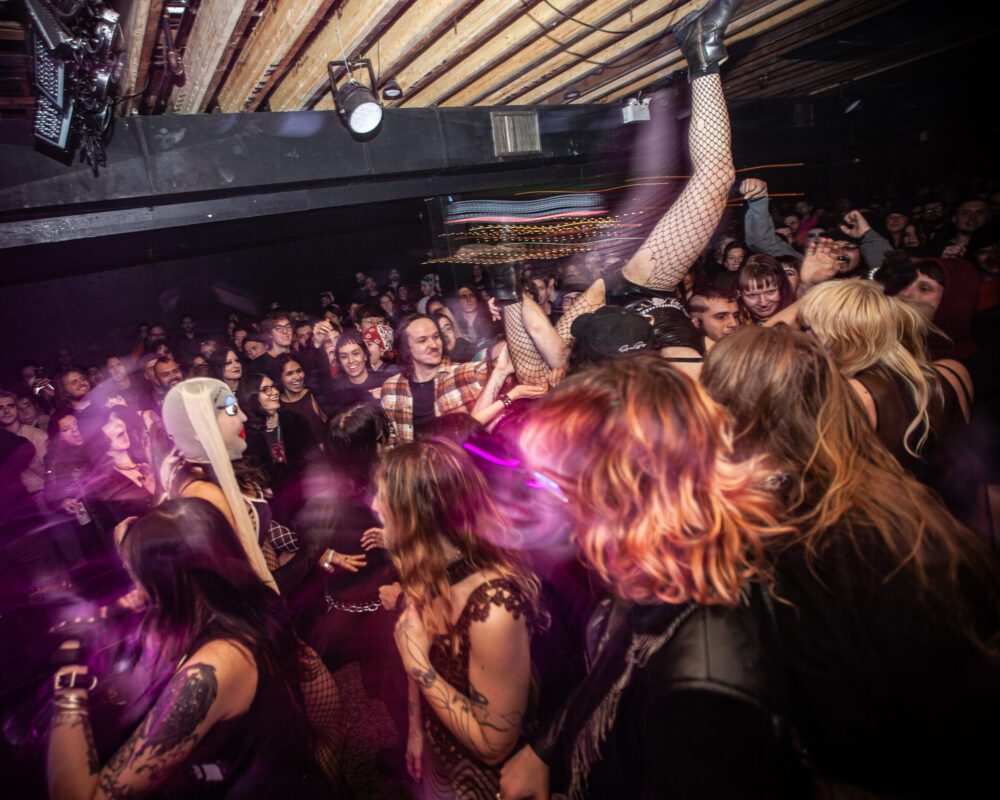Ratpiss is still quite new to Montreal’s power violence/grindcore scene. The music found on their debut EP, Misanthropy Now! sounds bloodthirsty with heavy riffs, banshee-like screams, and a drum section that feels like it’s on the warpath. This is the Suoni show to let your mosh flag fly. We chatted with the band a bit before their Suoni Per Il Popolo performance with Samurai and Plaga.
PAN M 360: For someone who has never heard of you, what can they expect?
Ratpiss: They can expect dumbfuck riffs in power violence and death metal-influenced variety.
PAN M 360: Can you make a Haiku for the band or the latest album, Misanthropy Now!
Ratpiss: Things keep going wrong, But my scene has riffs for days, Melt your face off die.
PAN M 360: How did you guys form?
Ratpiss: Erin and Greg conceptualized the project back in 2020, and released a rough demo called Do Not Return. Throughout the lifting and imposing of COVID restrictions, we jammed with several guitarists and spent a lot of time waiting around, and played two shows in late 2021 with our previous guitarist, Sami, before things locked down again. In early 2022 we started jamming with Tyler who Greg had jammed with another project, and things officially got on the go in March that year.
PAN M 360: Any influences within the scene?
Ratpiss: Plenty! Hakapik, Seum, S.F.D, Jetsam, Obelisk, Gutser, Hobo Death Cult, Xplicit Noize, Infeccion, Serpent Corpse, Collapsed, Doomsday Dementia, Maxxpower. There’s a lot of talent in Montreal that we are absolutely influenced by.
PAN M 360: I feel like moshing is kind of required at your shows?
Ratpiss: 100%. If we wanted to write music to stand around to, we could start an atmospheric black metal band or something.
PAN M 360: This music sounds cathartic as hell to play live. Are you guys unleashing some demons live?
Ratpiss: We are the demons.
PAN M 360: What do you know about Suoni Fest?
Ratpiss: To be honest, not much. This is the first time we’ve been made aware of it but it does seem to be a pretty expansive festival with a lot of different shows in a huge variety of genres. It’s cool to see live music so alive and well in Montreal.
PAN M 360: What about the bands you are playing with?
Ratpiss: Samurai are new so we don’t really know anything about them. We’ve been led to believe they’re sort of an old-school heavy metal band which our drummer Greg is thrilled about so he’s excited to see them. Plaga doesn’t seem to have much music online but we did come across a video of them on YouTube and from the one song we heard it sounds like some seriously ripping, riffy old school death metal of the variety that we are all influenced by in Ratpiss.

Ratpiss Live
PAN M 360: What’s the story behind Big T for being “the Jeffrey Dahmer-looking motherfucker?”
Ratpiss: That’s for us, the drunk guy who we got the recording of, and the Jeffrey Dahmer-looking motherfucker himself to know.
PAN M 360: Erin, do you have any vocal training for the growls? Those sound utterly and physically painful? Especially on “Acetylene Drunk.“
Erin: I have no proper vocal training, it’s been a long process of trial and error to find what I can do consistently without pain. It’s a lot of goofy-looking faces.
PAN M 360: Erin, the album cover for Misanthropy Now! was developed by you. Where did the collage idea come from?
Erin: I like the aesthetics of vaguely gory imagery in general. We’ve been known to use a lot of pictures of roadkill, and I think the cigarette packs that most of the images on the Misanthropy Now! cover relay the same feeling with the health warnings. Whenever I meet Americans it’s one of the first things they seem to notice. I thought it’d be nice to also have a specific way to reflect on where we’re from as well. At the end of the day, it doesn’t really go much deeper than I thought it would look cool, but I do think there is also something to be said about the socially acceptable slow suicide of smoking and a grimey music scene that doesn’t care to look too far ahead regarding our current state of the world, and how they relate to the themes on the EP.
PAN M 360: Is Montreal a supportive place for “grimecore” or just Ratpiss as a whole?
Ratpiss: Absolutely. We play amongst some of the most talented artists and wildest crowds and absolute top-tier homies. Wouldn’t want to be anywhere else.
Opening photo by Rose Cormier (https://velourssouterrain.squarespace.com)
Ratpiss plays at La Sotterenea w/ Samurai, and Plaga on June 22 for Suono Per Il Popolo Tickets Here

